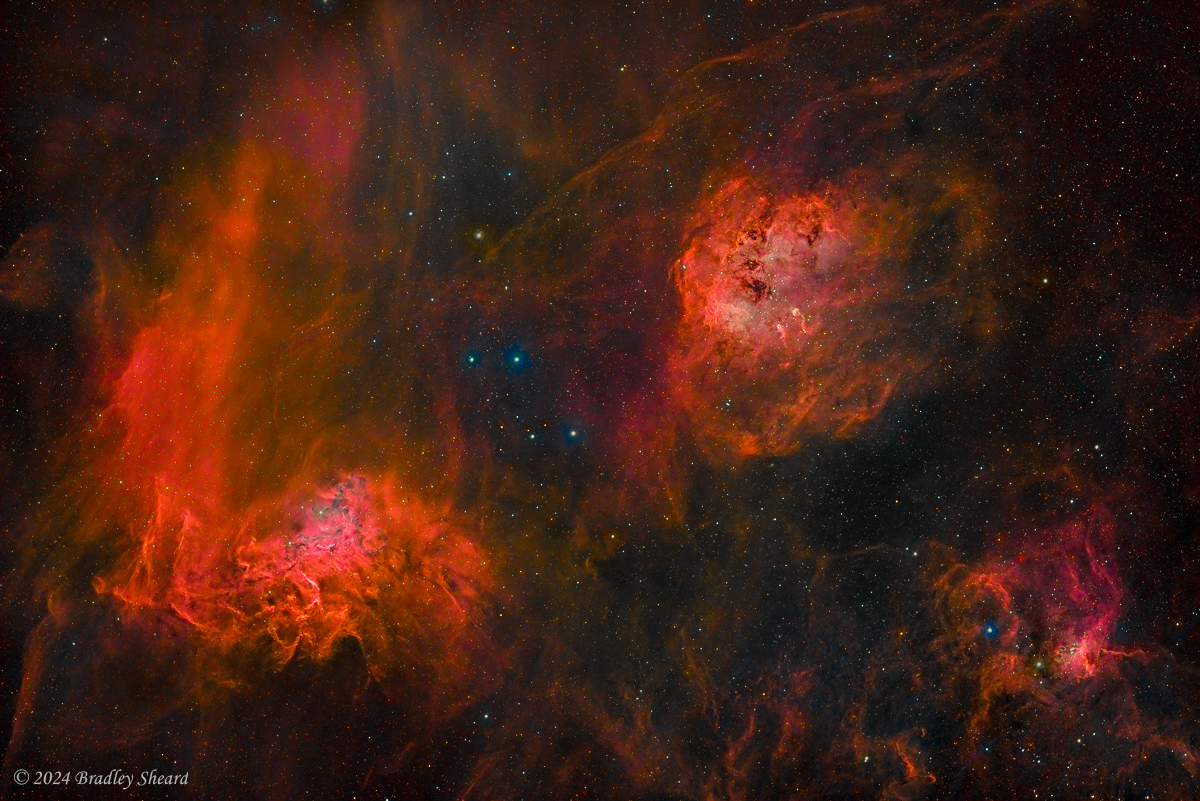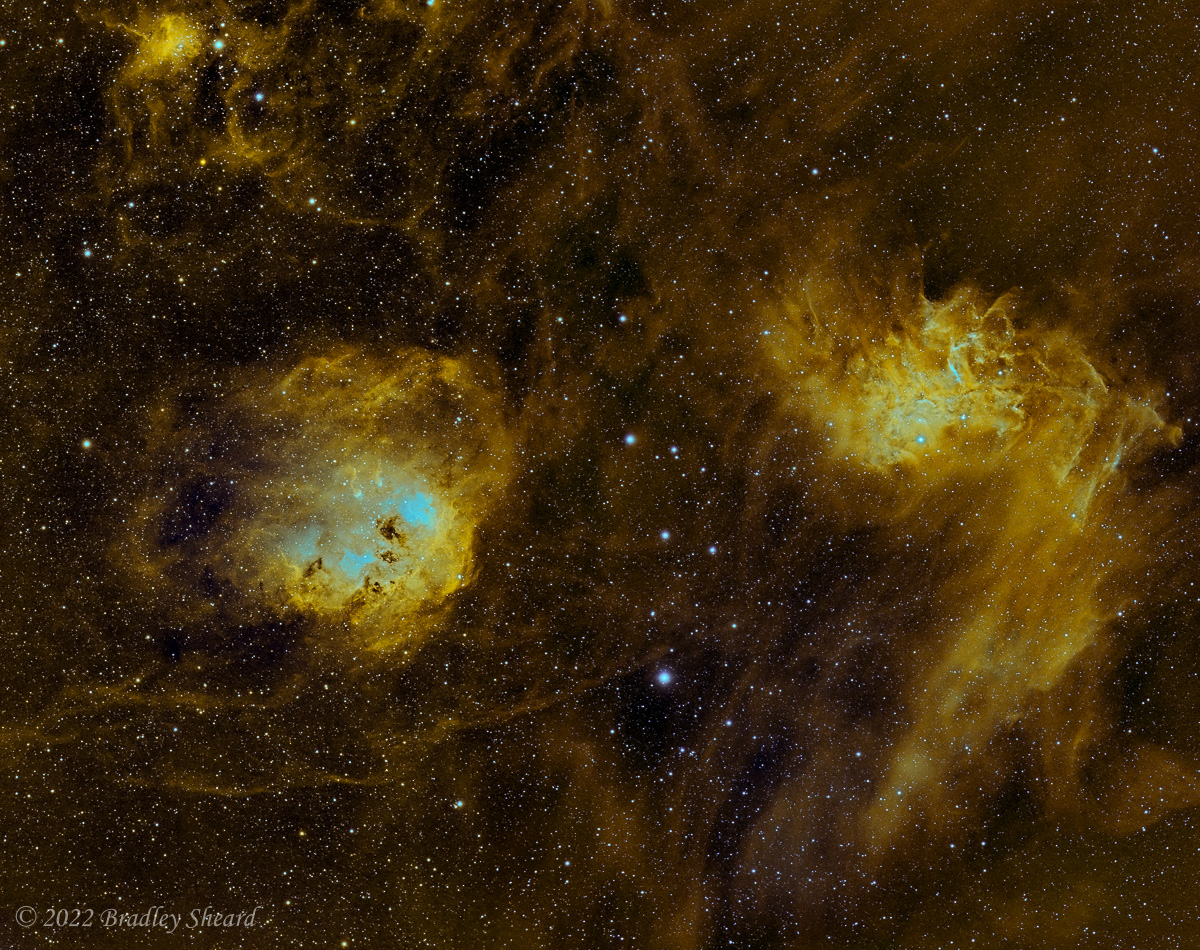IC405, IC410 & IC417: The Flaming Star Nebula in Auriga | |||
| « Previous | Back to Astrophotography Gallery | Next » | |
The Flaming Star Nebula in the constellation Auriga the charioteer. This nebula is a combination of an emission and reflection nebula. In addition to the brightest gas clouds there are thin wisps of gas and dust splayed across the deep space background. The hook-shaped nebula to the left is the "Flaming Star", IC405, while to the right is IC410, and lower right IC417. Two tiny 'tadpoles' can be seen just below the central region of IC410, and are believed to be locations of active star formation. | |||
 | |||
| Optics: | Takahashi FSQ-106 | ||
| Camera: | ASI6200MM Pro cooled CMOS camera | ||
| Filters used: | Astronomik RGB, Astrodon H-alpha | ||
| Exposure info: | RGB: 28/30/61 x 120 secs, Ha: 24 x 600 secs, ~ 8 hours total exposure | ||
| date: | March 2024 | ||
| processing: | Pixinsight-->Photoshop-->Topaz DeNoise AI-->Lightroom | ||
Below is an earlier version of this region, shot entirely in narrowband and presented in a modified Hubble palette:
 | |||
The image above is my first attempt at a mosaic, and this image is made up of 2 panels stitched together in PixInsight, and is presented here in a modified Hubble palette. This is the first part of a multi-pane mosaic I spent most of February and March 2017 working on, which stretches across the constellation Auriga. The next couple of images in this series are displayed here sequentially (ie hit the 'Next' button up top, or you can get there from the main astroimaging page). | |||
| Optics: | Stellarvue SV70T w/ reducer | ||
| Camera: | ZWO ASI 1600MM cooled CMOS camera | ||
| Mount: | iOptron iEQ30 Pro, auto-guided | ||
| Exposure info: | 600 sec exposures, 2 panel mosaic, 16 hours total exposure | ||
| Filters used: | Astrodon H-alpha, OIII and SII (5, 3, 5 nm) | ||
| date: | Feb-March 2017 | ||